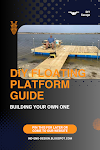Evaporative coolers are a great home cooling option, especially if you come from an area where it’s fairly dry and it’s the hot season. Of course, there are multiple benefits in choosing an evaporative cooler for your home cooling. According to Roy Otterbein, the president of a Phoenix, Arizona-based Company, Otterbein Engineering, an evaporative cooler is one tenth to a quarter cheaper in terms of operational costs compared to air conditioning units.
The installation of a swamp cooler can prove to be a fairly difficult task, even to the best handyman around. One of the main reasons is mainly because the coolers are not as light as you may think, they can be pretty heavy. However, this doesn’t necessarily mean that DIY installation is impossible. The only simple requirement is that you follow the steps and have a friend help you with the heavy lifting. Below are some DIY evaporative cooler installation tips you might want to check out.
NUMBER 1 – The Support Assembly
One of the advantages of an evaporative cooler is that they come with a support assembly that is ready to use. If by chance you don’t have one, you can readily purchase one from the stores and ensure that it is of the right size for your swamp cooler. Be sure to read the manual carefully and make sure that when building the support assembly outside the window sill, you ensure that it is as firm as possible.
NUMBER 2 – Mounting the Cooler
This stage involves placing the unit in its resting position, for which you may need a set of extra hands since the unit can be fairly heavy to lift. Carefully lift and mount the cooler on the support assembly. One of you should hold the cooler on the support mounting firmly while the other one is attaching the wall hangers and the brackets to the cooler. Have the manual close to ensure that you don’t miss on any detail.
NUMBER 3 – The Water Line
Your cooler requires a steady supply of clean water. Connect the water line to the cooler from your outside water source and make sure you have a cut off valve. The cutoff valve will be highly useful, especially when it’s time to drain the system, which will be required during the start of a winter season to minimize any form of damage from the harsh weather.
NUMBER 4 – Installing the Air Vent
You should be provided with an air vent cover and this should be in the evaporative cooler kit. You need to now attach the air cover. The air vent is what directs the cool air into your house. Roof tar is best in sealing off any opening. Conversely, the screws used on the mounting brackets should also be coated to avoid rusting.
NUMBER 5 – Power Up
Ensure that the power outlet is grounded 120-V before you plug in the cooler. Before you power up your equipment, ensure there are no leaks. Also, fill any void space around the cooler so that you don’t lose the cooled air from the cooler. If all this checks out, you are good to go. If you are unfamiliar with electrical connections, is good to have the help of a certified electrician.
As much as these DIY tips can help you set the equipment up and running, it is always much wiser to leave the job to the evaporative cooler installation experts. Poor swamp cooler installation may lead to problems such as unacceptable cooling performance, low energy efficiency, and constant breakdowns in future. Always choose a good experienced, reputable, and professional HVAC contractor for evaporative cooler installation to get the most out of your investment. If you aren’t sure who to call in your area, you can always call the good folks at Altitude Comfort Heating and Air in Denver, and they will try to offer a referral for a reputable contractor in your area.











0 Comments